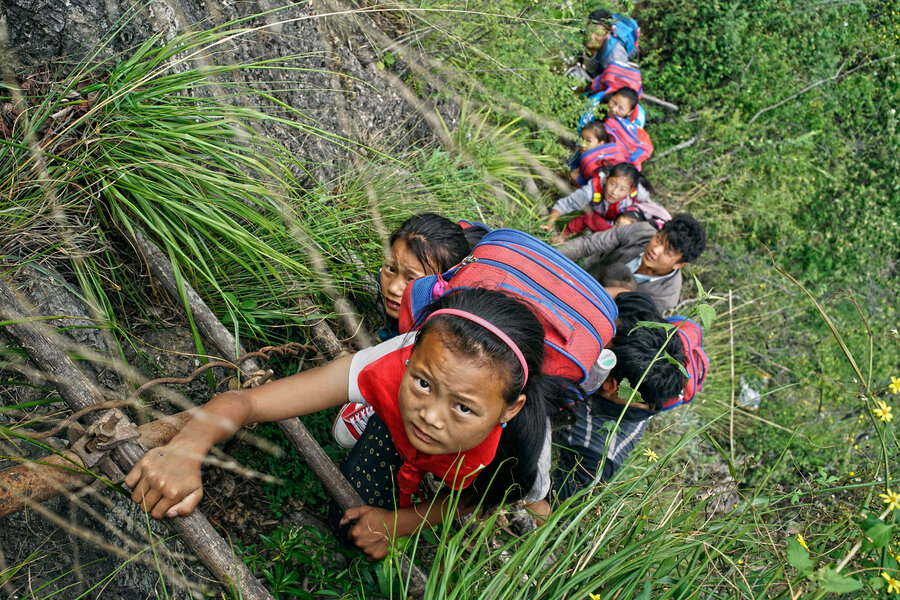Why Chinese school kids face a treacherous cliff-face commute
Loading...
To get to school, a group of Chinese school children must clamber more than 2,660 feet down a sheer cliff on makeshift wood-and-vine ladders.
After images of the children scaling the cliff captured by an award-winning Chinese photographer caught national and then international attention, local Chinese authorities promised to take steps to find them a safer route between their homes and school.
The children come from a remote rural village called Atuler, which sits atop a mountain in southwestern China's Sichuan Province. There is reportedly not enough room to build a school on top of the mountain, so the children have to scramble to one in the valley below.
Seven people have reportedly died already trying to make the same journey, according to The Independent. Because of the dangers involved, the children board at the school and only return home twice a month when their parents can help escort them on the treacherous trip the Guardian reports.
The children, between ages of 6 and 15 years old, come from a 72-family village, whose economy is built around the subsistence farming of potatoes, chili, and walnuts.
According to local reports, some four dozen staff members from Zhaojue county's transport, education, and environment departments arrived in Atuler this week and have since promised to install steel stairs on the mountain face before planning a longer-term solution.
One such solution might take the form of a road to connect the village to the outside world, according to Global Times. However, officials say that would cost around 40 million yuan ($6.1 million) to build, and the Zhaojue county only receives 4 million yuan worth of Chinese government aid for poverty-relief funding.
"Lack of infrastructure seriously limits village development. Even when there's a decent harvest, residents have to transport agricultural products to the market themselves," Zhaojue county office secretary Jike Jinsong told The Beijing News.
The situation, some experts say, shows how many rural poor are being left behind as China rapidly urbanizes and its middle-class grows.
Some local authorities have been less likely to put funds into poverty relief because of the lack of an obvious return on investment, Yu Shaoxiang a social security and poverty relief legislation expert at the Chinese Academy of Social Sciences told the Global Times.
However, more than 680 million Chinese have come out of poverty since the country's economic reforms in the 1980s, according to The Guardian.
The photos of the children's cliff-face commute were taken by Chen Jie, a Beijing Times staffer. He told The Guardian via WeChat that he hoped his images would help change Atuler’s "painful reality."
This report includes material from the Associated Press.






